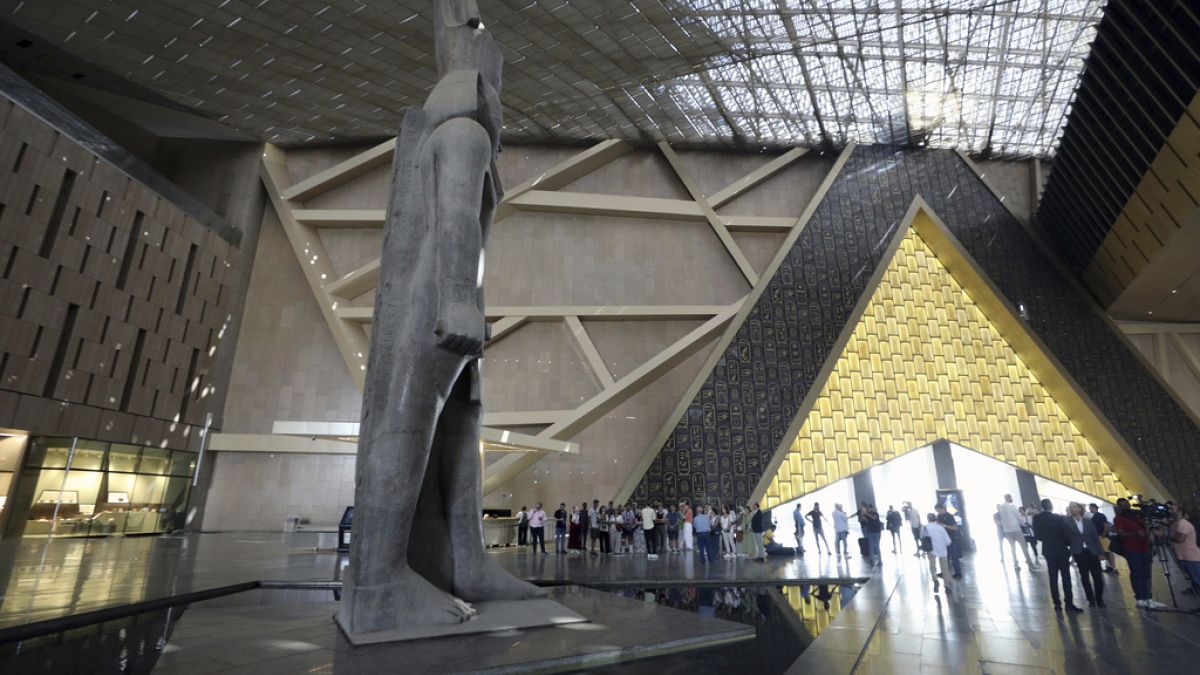When Saturday comes, the monumental Grand Egyptian Museum (GEM) will celebrate its official opening.
The long-awaited exhibition space will become the largest museum in the world dedicated to a single civilisation: Ancient Egypt.
The GEM will have over 100,000 artefacts on display, from Tutankhamun’s tomb treasures to pharaoh Khufu’s famed ‘solar boat’.
Tutankhamun’s tomb treasures open to the public
Visitors will enter the museum via the Grand Hall and Grand Staircase, vast spaces that house towering hieroglyphed columns and colossal statues of pharaohs.
These lead to the Main Galleries, which were opened to 4,000 lucky visitors in October 2024 for an exclusive preview.
On 1 November 2025, the final phase of the GEM will be complete, with the opening of the much-anticipated Tutankhamun Galleries, showcasing more than 5,000 artefacts from the boy king’s tomb.
Those who attend the inauguration – leaders and dignitaries from around the world – will be able to gaze at objects like the dazzling gold funerary mask and life-size wooden statues of the young pharaoh.
The glittering opening ceremony will be live-streamed on TikTok.
The public can book their visit to the institution from 4 November. The entrance fee for adult foreign visitors will be 1,450 Egyptian pounds (€30).
In total, the museum will have 22,000 square metres of exhibition space. It will also be home to one of the most extensive conservation and research facilities in the world.
An underground tunnel connects the main building to 19 specialised laboratories dedicated to safeguarding Ancient Egyptian heritage, from fragile papyri to sculptural fragments and human remains.
The GEM aims to welcome up to five million visitors each year.
A bold design bridging ancient history and contemporary innovation
The museum sits on the desert plateau of the Nile, just a few hundred metres from the iconic Pyramids of Giza.
The striking design by Irish architect Roisin Heneghan is a clear homage to the ancient structures – triangles and pyramids are the dominating forms – while turning a firm gaze to the future with the use of scientific and sustainable innovations.
For example, the construction uses reinforced concrete, a material that aids the regulation of internal temperatures, reducing reliance on air conditioning.
The surrounding gardens, also peppered with triangular forms, were developed with landscape architects West 8 and inspired by the lush vegetation of the Nile Valley.

